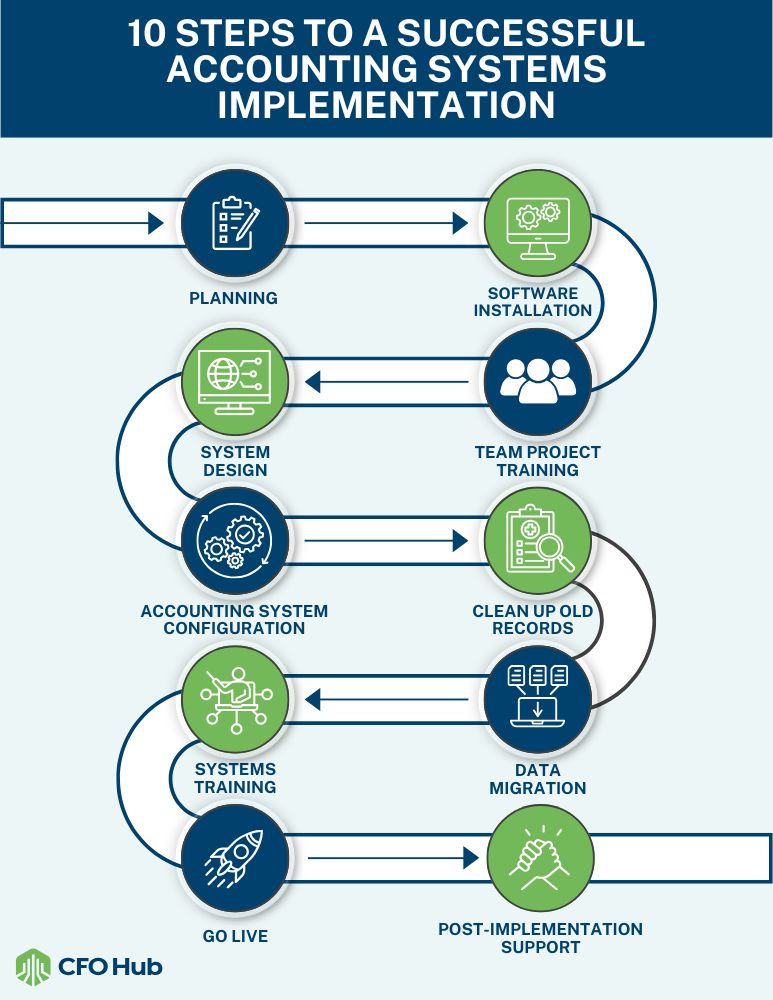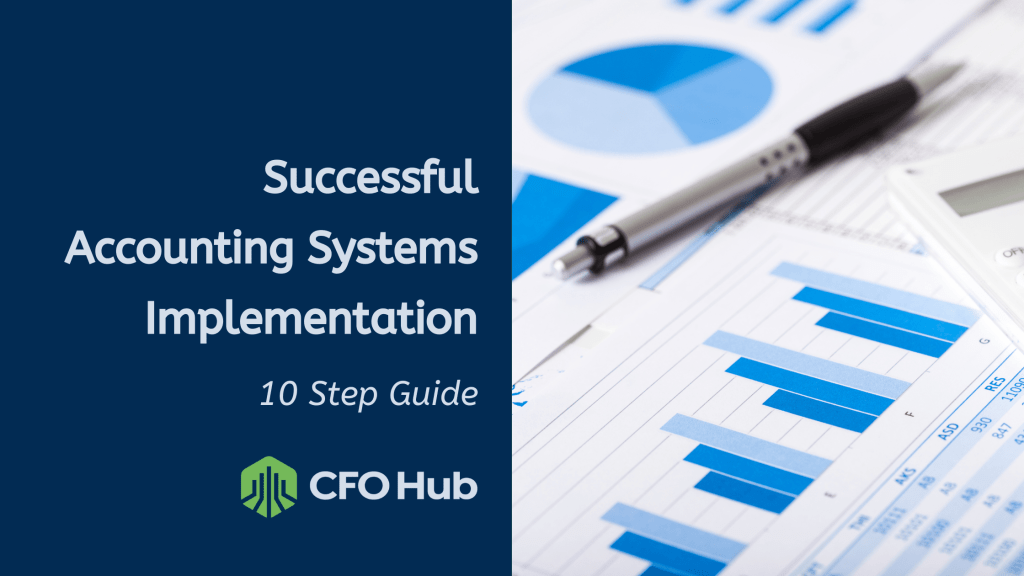A good accounting system makes running your business so much easier, yet implementing a new accounting system is no easy feat. It can take anywhere from months to years. The implementation process is also ripe for errors if not planned correctly.
Consequently, you need to treat your accounting systems implementation as a full-stop business project. By following a proven process, you can maximize your implementation speed and accuracy while minimizing disruption to your business.
Keep reading to learn a step-by-step process to accounting systems implementation.
The Three Approaches to Systems Implementation
You can implement your new accounting system in one of three ways.
Big Bang
The switch happens all at once. Everyone in your business begins using the new system on the same date. From that moment on, no one uses the old system unless they need to reference past data.
Big Bang implementations gone wrong can lead to delays and push you over your budget. If something isn’t working correctly, your employees may become frustrated, too.
Parallel Running
Parallel running is considered the safest approach to implementation. Users use both systems at the same time. In doing so, they can gradually learn the new system while being able to fall back on the old system. Plus, you can identify and fix problems while still having the old system as a safety net.
The downside is additional time investment from the users. They’ll have to input the same data twice — and one of those inputs will occur in an unfamiliar system.
Phased Adoption/Rollout
Phased adoption implements the new system in chunks. More important modules are implemented first.
Phased adoption tends to have higher integration costs than the other two methods.

The Accounting Systems Implementation Process
When you purchase an accounting system, the software company will provide you a skilled consultant to help you implement the whole thing.
Additionally, most software companies will send you a project manager to oversee the implementation.
With that said, here is your accounting systems implementation process.
1. Implementation Planning/Project Initiation
First, you’ll need to define several core pieces of the project.
- Objective
- Scope
- Risks
- Assumptions
- Deliverables
When you’ve defined these, you should have a plan in place for the entire project.
Review your business’s processes and requirements as well. Find areas that need improvement as well as areas that are doing well. Factor these into your project plan.
2. Software Installation
Now, you’ll need to install the software onto your computers. You’ll want to ensure your hardware and network can support your new system as well as have any necessary hardware set up.
3. Team Project Training
At this point, you aren’t training staff on how to use the systems. Instead, you’re teaching them how to participate in the implementation process so that things run as smoothly as possible.
4. System Design
The software’s installed, and your staff knows how to be a part of implementation. Before you can configure the system to fit your business, you need a system design plan. This plan will include information about all functional areas, transactions, processes, security, and database/coding structures.
At the end of this stage, you’ll have a system design document that demonstrates that your end goal for the implementation is achievable. This document should be detailed enough so that a consultant can configure the system to your liking.
5. Accounting System Configuration
Now, you work with the consultant to configure your accounting system to fit your business based on the system design document. Everything should be tested to ensure its working in this phase.
You’ll then sign off on this to state that the system is acceptable.
6. Clean Up Records in Old System
Before migrating your data over, clean up your records in the old system with which you’re familiar. Doing so will make the transition to the new system much more manageable.
7. Data Migration
Time to move all data from your legacy system to your new system. You should have a plan in place for all activities required in moving to the new system.
8. Systems Training
Before reaching this phase, you need a training plan in place. You may need to work with the consultant to create training materials covering all new software functions.
When you have these training materials, you can teach your staff how to use the software so your business runs smoothly.
It’s important to time this right. You want to train your employees far enough ahead of going live — but if you train them too early, they may forget how to use the system.
9. Go Live
Finally, you go live with the software. You make the full, final transition to the new system.
10. Post-Implementation Support
Your software company should now provide on-going support through a helpdesk or something similar. Additionally, they may offer free resources — such as webinars — to train your employees on how to use the system better.
Upgrading to a new accounting system (or launching your first one) can pay off in spades. But are the time and resources involved holding you back? CFO Hub can take much of this monumental task off your hands so you can get back to growing your business. Contact us today for your free, no-obligation consultation.
Mark is an accounting and finance professional with over a decade of experience in public accounting and consulting. As both an accountant and entrepreneur, he is passionate about helping clients strategically organize and grow their businesses to reach their goals.
Visit Mark's Expert Hub to learn more about his experience and read more of his editorial content

